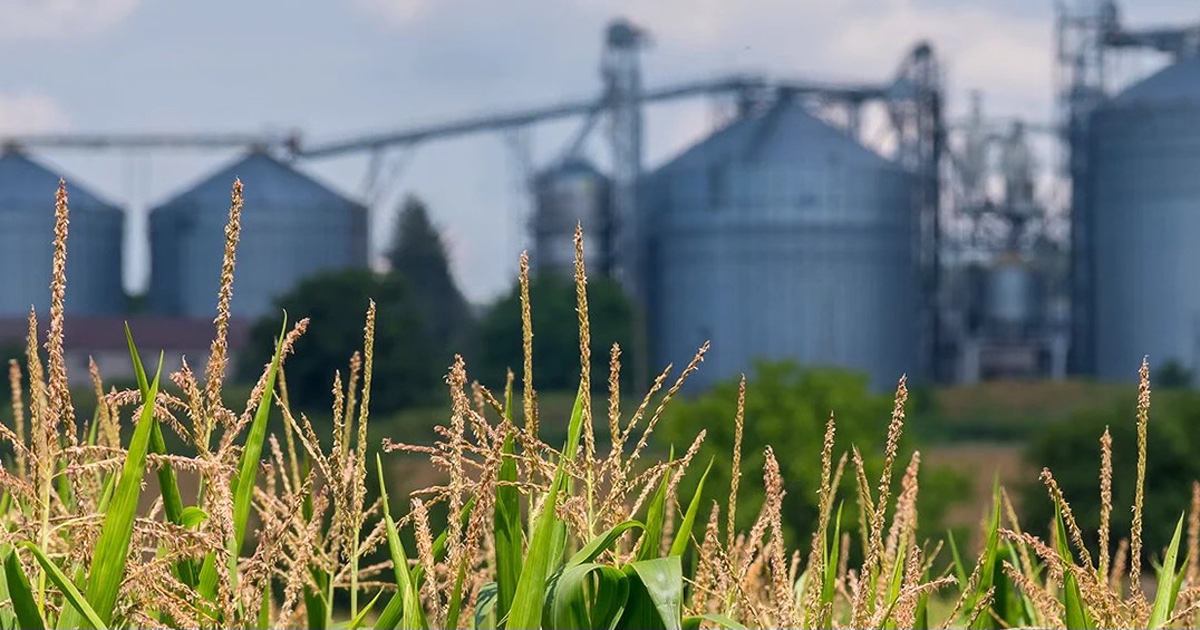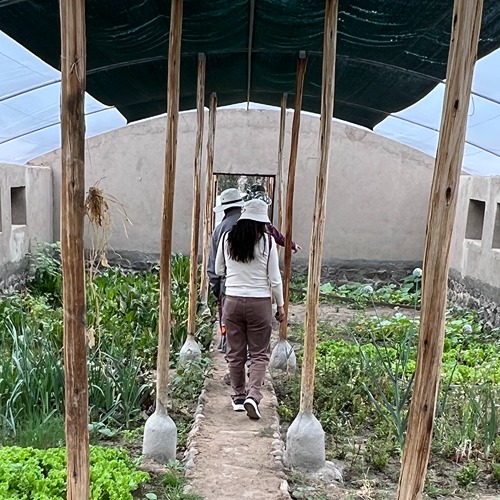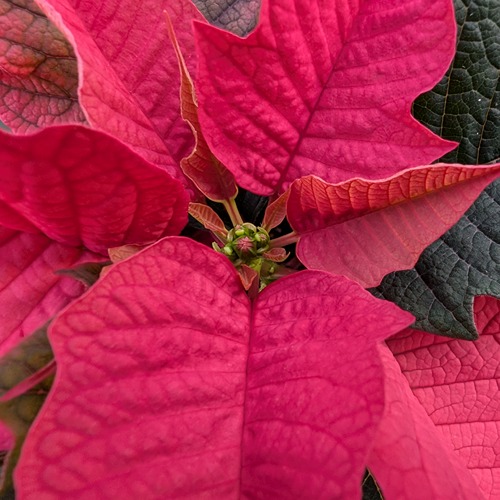Colorful leaves, colorful garden: How to keep veggies thriving in the fall
It’s finally autumn, and soon alumni in black and gold sweatshirts will flock back to Purdue University for gameday tailgates. Students will gather in a dorm room to celebrate ‘Friendsgiving’ with their own potluck before Thanksgiving break.
Of course, fall festivities wouldn’t be the same without sharing a cozy meal, from pies, to chili, to casseroles and more. But as temperatures drop, so does access to garden fresh ingredients. Petrus Langenhoven, clinical assistant professor in Purdue Horticulture and Landscape Architecture, shares how you can keep your garden thriving with seasonal vegetables, perfect for fresh fall dishes.
What is harvested in the fall?
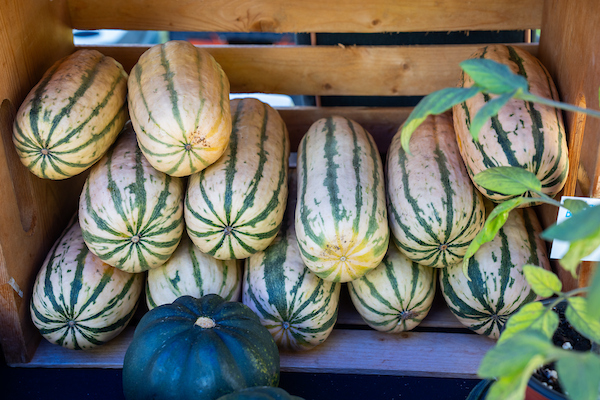
Just because it’s getting colder doesn’t mean there won’t be plenty of fresh produce for holiday dishes. “Soon there will be
ample sweet potatoes, pumpkins and winter squash,” said Langenhoven. “Now this inspires many fall recipes, from pies to soups to casseroles!”
Root vegetables, like carrots and beets, and cruciferous vegetables, like kale, cabbage and broccoli, can also be harvested throughout fall. Some gardeners may have dry beans to harvest and store–and perhaps use for game day chili.
What should I do to prepare for the drop in temperature?
Some gardeners may still have tomatoes, peppers or eggplant, but these crops’ yields will decrease and disease might start to set in. To extend your garden’s life, Langenhoven suggests using a frost blanket tooffer insulation from cold damage.
The start of fall is a good time to clean your garden out. Removing plant debris, composting it and applying the compost will make room and cultivate healthy soil for fall and winter crops.
What can I plant now to harvest later in the fall?
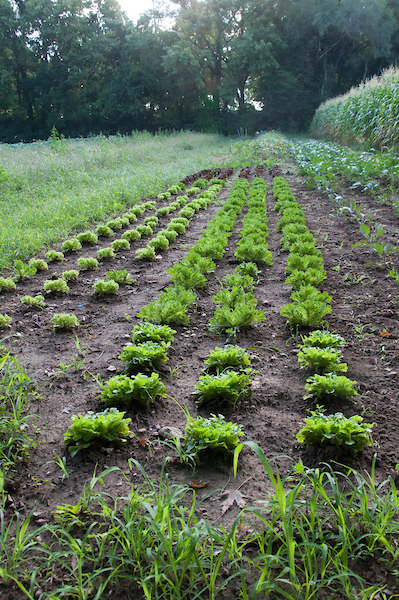 It might surprise some gardeners, but it’s not too late to plant certain crops. “There is still plenty of time to plant garlic cloves,” said Langenhoven. “You can seed radishes and spinach and plant leaf lettuce from transplants, too, although I’d recommend planting now, as we’re nearing the end of the ideal planting window. Choose fast maturing radish, lettuce and spinach varieties.”
It might surprise some gardeners, but it’s not too late to plant certain crops. “There is still plenty of time to plant garlic cloves,” said Langenhoven. “You can seed radishes and spinach and plant leaf lettuce from transplants, too, although I’d recommend planting now, as we’re nearing the end of the ideal planting window. Choose fast maturing radish, lettuce and spinach varieties.”
How can I prepare for next spring?
Langenhoven suggests planting a winter cover crop to prevent soil erosion during the colder months. “I like to seed black oats. Although the crop will get killed in late December or early January, it will prevent erosion,” he said. “Or you can plant cereal rye, which stays alive all winter and starts to grow in the spring. It must be terminated at a young stage to prevent nitrogen tie up, though.”
Fall Garden Recipes
Servings: 12–16
Prep Time: 30 minutes
Cook Time: 2–3 hours
Fall Garden Ingredients:
- 2 large onions, diced
- 6 cloves garlic, minced
- 1 large bell pepper, diced
- 2 cups crushed tomatoes (sub/supplement 1 can)
- 4 cups dry beans, rinsed and drained (sub/supplement 2 cans dark kidney beans)
- Carrots
- Zucchini
Fall Garden Garnish:
- Diced onions
- Sliced green onions
- Jalapeño slices
Ingredients:
- 3 pounds ground beef
- 2 tablespoons cooking oil
- 2 tablespoons dark chili powder
- 1 tablespoon ground cumin
- 1 tablespoon smoked paprika
- 1 teaspoon chipotle chili powder
- 1 teaspoon ground black pepper
- 1/2 teaspoon cayenne pepper
- 1 can diced tomatoes with green chilies
- 3 cups beef broth
- 1 tablespoon Worcestershire sauce
- Salt to taste
Fresh Fall Tip: Some gardeners may still have tomatoes, peppers and zucchini. Chili is a great way to use the last of your crop!
Instructions:
- Brown the Meat: In a large Dutch oven or heavy pot, heat the oil over medium-high. Add the ground beef and cook until browned, breaking it apart with a spoon. Remove excess fat.
- Sauté Vegetables: Add the diced onions, garlic, and bell pepper to the pot. Cook until softened, about 5 minutes.
- Toast Spices: In a small pan over low heat, toast the chili powder, cumin, smoked paprika, chipotle powder, black pepper, and cayenne pepper until fragrant, about 2 minutes. Add this spice mix to the meat and vegetable mixture, stirring well to combine.
- Add tomatoes and beans: Stir in the diced tomatoes, crushed tomatoes, and beans.
- Simmer: Pour in the beef broth and Worcestershire sauce. Bring the mixture to a simmer, then reduce the heat to low. Cover and let it simmer for 2–3 hours, stirring occasionally.
- Serve: Add salt if needed. Offer a variety of garden garnishes for guests to customize!
Fresh Fall Tip: Sneak in your zucchini and carrot harvest for added nutrition!
Servings: 14
Prep Time: 20 minutes
Cook Time: 1 hour 20 minutes
Fall Garden Ingredients:
- 2 cups sweet potatoes, roasted and mashed
Cake Ingredients:
- 2 cups white sugar
- 1 cup butter (softened)
- 1 tsp vanilla extract
- 4 large eggs
- 3 cups all-purpose flour
- 2 tsp baking powder
- 1 tsp ground cinnamon
- ½ tsp baking soda
- ½ tsp nutmeg
- ¼ tsp salt
- Orange for garnish, if desired
Glaze Ingredients:
- 1 cup confectioners’ sugar, sifted
- 5 tsp orange juice
Instructions:
- Prep: Preheat oven to 350 F. Grease and flour a 10-inch bundt pan.
- Wet ingredients: With an electric mixer, cream sugar and butter in a large bowl on medium speed until light and fluffy. Add mashed sweet potatoes and vanilla until well blended. Mix in eggs one at a time.
- Dry ingredients: In a separate bowl, sift flour, baking powder, cinnamon, baking soda, nutmeg, and salt. Slowly add mixture into the bowl of wet ingredients while mixing on low speed.
- Bake: Add batter to the pan. Bake for 1 hour and 20 minutes or until a toothpick comes out clean.
- Glaze: In a separate bowl, mix confectioners' sugar with orange juice until a thin glaze is produced.
- Serve: Cool for 20 minutes, then transfer cake to a plate by inverting. Top with glaze and orange zest garnish.
Servings: 6
Prep Time: 5 minutes
Cook Time: 1 hour
Fall Garden Ingredients:
- 2-3 lbs. butternut squash, cubed
- Carrots, cubed
- Onion, cubed
- 3-4 cloves garlic, minced
Ingredients:
- Salt and pepper
- Olive oil
- 1 tbsp ginger, minced
- 1/2 tsp cumin
- 4 cups vegetable broth
- Apple, peeled, cored and cubed
Instructions:
- Roast: Preheat oven to 375 F. Place cubed squash, carrots and onions on a baking sheet, drizzle with olive oil and season with salt and pepper. Roast for 45 minutes or until squash is fork-tender.
- Sauté: In a large pot, sauté garlic and giner in olive oil over medium heat until softened.
- Simmer: Add broth, vegetables, cumin and apple to the pot. Stir until liquid is boiling, cover with lid and simmer for 10 minutes.
- Blend: Remove pot from heat and blend soup in an immersion blender.

